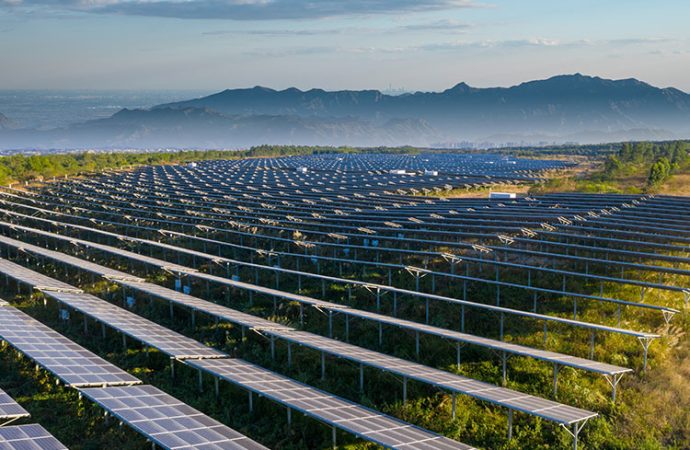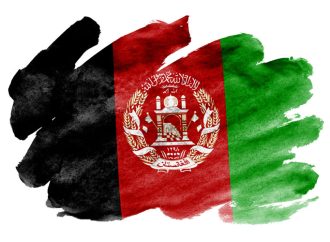Author Recent Posts Rabia Anwaar Latest posts by Rabia Anwaar (see all) Unequal Land Distribution Exacerbates food insecurity in Pakistan – April 22, 2025 Trade and Tariff War: What’s Next for Pakistan’s Economy? – April 22, 2025 US Military Equipment in Afghanistan Fueling Regional Instability – March 27, 2025
The seemingly unresolvable energy crisis of Pakistan holds responsible to its domestic dynamics and negligence of stakeholders, alongside global factors. Pakistan has been marred by acute energy crisis brought on by faltering economy, incompetent governance, policy regulatory challenges, energy theft and circular debt, and lack of political will and investment to boost energy capacity. Pakistan is not a unique case among 197 countries however, the domestic dynamics of the country are extra-ordinarily responsible for such crises. The country is looking for overcoming this predicament but unable to exterminate the culprits behind the crisis. This has led to widen the gap between energy demand and supply and it is not like Pakistan is doing nothing to overcome the gap but the worrisome point raised here is that is the government of Pakistan doing it with willingness and sincerity?
The severity of energy crisis is taking toll on the peaceful lives of citizens. Pakistan has probably the worst electricity supply and regulatory system in the region having multifaceted problems. The regulatory departments keep on making excuses for poor supply of electricity to the citizens; be it power load management plan, approved or unannounced shutdowns, technical fault in power lines or fluctuations in voltage, etc. With already rising inflation and back breaking price hikes in almost all spheres of life, people are robbed of their peaceful night sleeps due to nocturnal load-shedding on account of power cuts.
Pakistan is currently an energy deficit state. Due to increased gas and power outage, the demand stretches and power supply is stalled. The country’s generating capacity falls well below demand, and its available domestic energy supplies are dwindling. As a result, Pakistan must pay increasing amounts for expensive energy imports. As per the official data, the power shortfall has exceeded 8500MW, in need of 28500MW and generating only 20,000MW of power whereas country is more than 25% dependent on imported LNG for fueling gas related necessities. Pakistan is not able to do much about it due to a number of existing challenges it is facing today. To say that Pakistan is in dire need to bridge the power gap as it leads to massive power outage adding to people’s misery would not be wrong.
Amid other hurdles, one of the biggest challenges that Pakistan face is government’s lack of interest in investing to increase power generation capacity and conservation of energy. Pakistan has recently got a bailout package of $3billion approved from IMF in July which demands Pakistan’s’ economic reform program to impose price hikes in electricity and gas supply on people of Pakistan, adding immense misery to people’s problems. Pakistan is not less abundant in its renewable energy resources but the lack of will of government to utilize them, invest in them and conserve them appropriately hits really hard this sector.
Political tussles and bureaucratic infightings have devastated Pakistan’s economic and energy infrastructure to the core. The government of Pakistan relies on fossil fuel imports since decades which resultantly requires more spending on energy sector than it actually makes. Pakistan has a dilemma that every other political party that comes into power throw the blame of deteriorated situation of the country to the previous one and thus, takes no ample responsibility and measures to rectify the mistakes and bring improvement in this very sector. Pakistan lags far behind in construction of dams for generating electricity; Kalabagh dam, an epitome example in this scenario. It is a proposed hydroelectric dam, if constructed, could hold the potential of generating 3600MW of electricity but fell prey to political strife, ethnic and regional fault lines.
The persistent issue that is engulfing Pakistan’s development and prosperity is the governance and reform crises. Pakistan is plunging deep into the pit of poor management and failed administration of country’s reserves and resources. The matter of fact is that in Pakistan, personal interests of people holding high offices take precedence over state’s interests. Pakistan lacks sincere, competent and efficient leaders that guide Pakistan a right path to follow. Furthermore, there exist policy framework regarding energy production and sustainability but non-compliance or partial implementation of such policies pose grave threat to Pakistan’s energy security.
For example: Pakistan has a National Electricity Policy 2021 aimed at providing affordable energy, preserving energy security and developing sustainable energy but unfortunately it remains far from implementation strategy and actions.
Another major issue is of circular debt. Pakistan has reached Rs.2631 billion and rising every year which is also responsible for burden on service sector of Pakistan generating and distributing electricity. Besides, the cost of electricity in Pakistan has skyrocketed. Electricity bills are heavily imposed with capacity charges and FBR tariffs, adding misery to citizens’ lives. Moreover, non-payment of electricity bills by consumers couple with energy theft is a problem for already crippling energy sector of Pakistan. The only solution here proposed is that electricity subsidies can only be sustained if they are openly acknowledged in the fiscal budget; otherwise, the economy would continue to suffer as a result of the indirect cost of these subsidies.
To take a hold of public distress and general discontent, government is taking little moves which could get huge if remain meaningful. Senate has recently raised voice in the wake of increased prices of almost everything existing in Pakistan particularly electricity bills. Senator officials blame Independent Power Producers (IPPs) for the extraordinary electricity bills and so has demanded review of agreements with IPPs to save most vulnerable classes from tax and tariff hikes as a lot of underprivileged people are left with no choice but giving up their lives.
Pakistan can only prosper if developed from utilizing renewable energy resources and reformed domestically with sheer sincerity to boost power sector of the country. The cascade of circular debt that every government leaves on public and distribution sectors should be on high priority to address. As an immediate strategy, the government of Pakistan must have a tight grip over power theft to avoid capacity charges in the bills. Furthermore, government should first improve its functioning and realization is of paramount importance that they are in power to serve the people not to plunder them which is hard to believe but could be only savior for Pakistan. Pakistan’s bright future is bleak as long as its power sector remains unreformed, maladministered and underinvested by public-private partnership.
- Unequal Land Distribution Exacerbates food insecurity in Pakistan - April 22, 2025
- Trade and Tariff War: What’s Next for Pakistan’s Economy? - April 22, 2025
- US Military Equipment in Afghanistan Fueling Regional Instability - March 27, 2025













Leave a Comment
Your email address will not be published. Required fields are marked with *